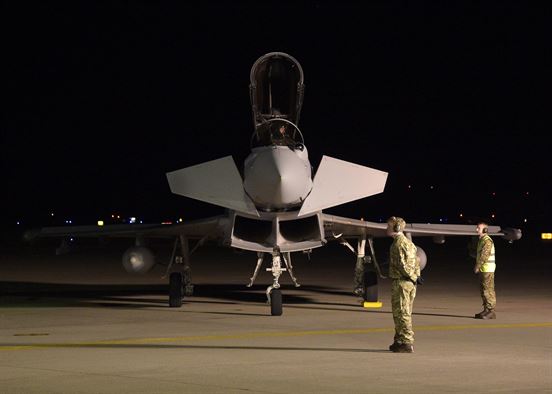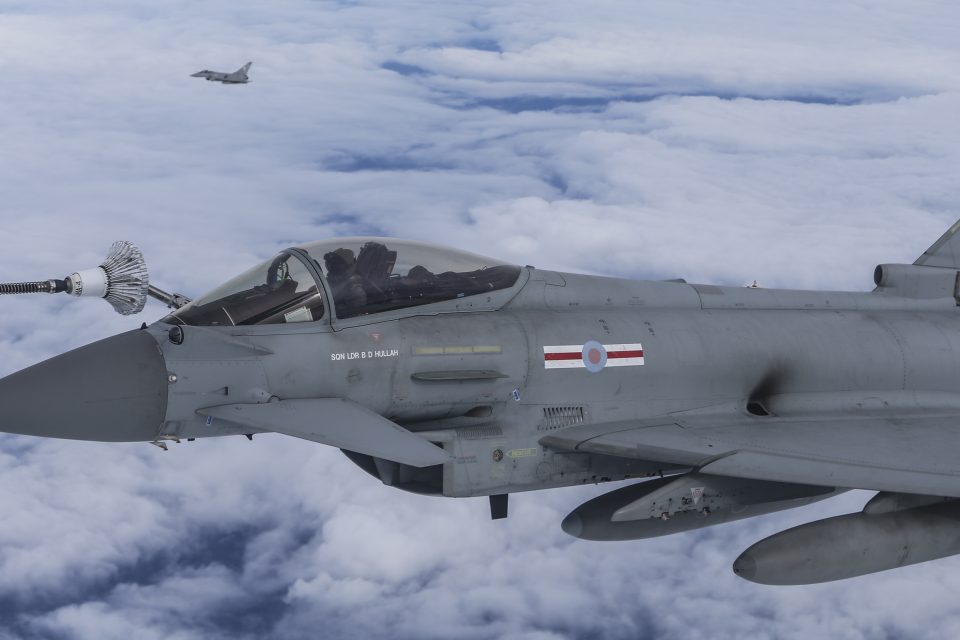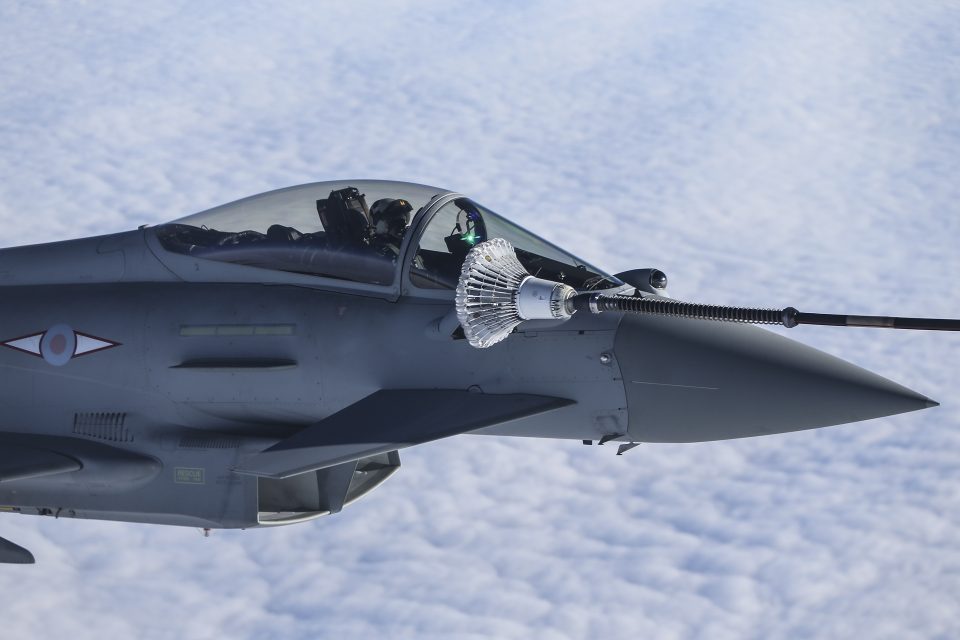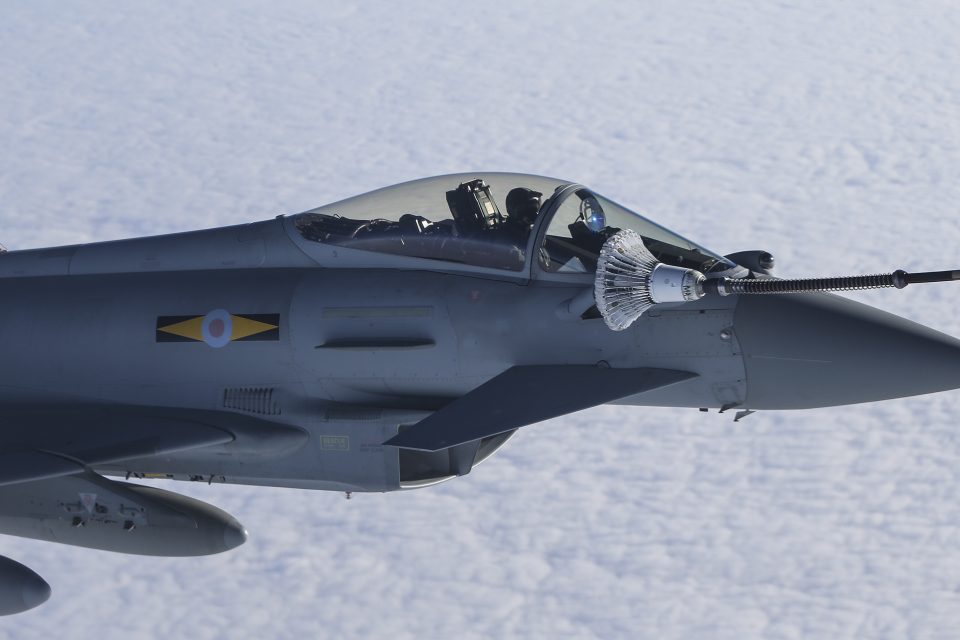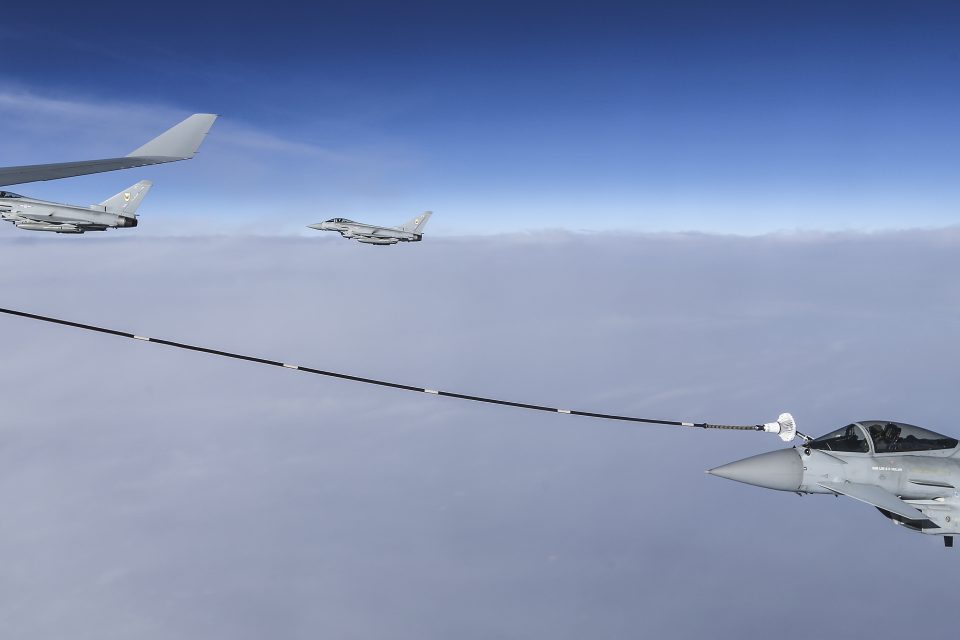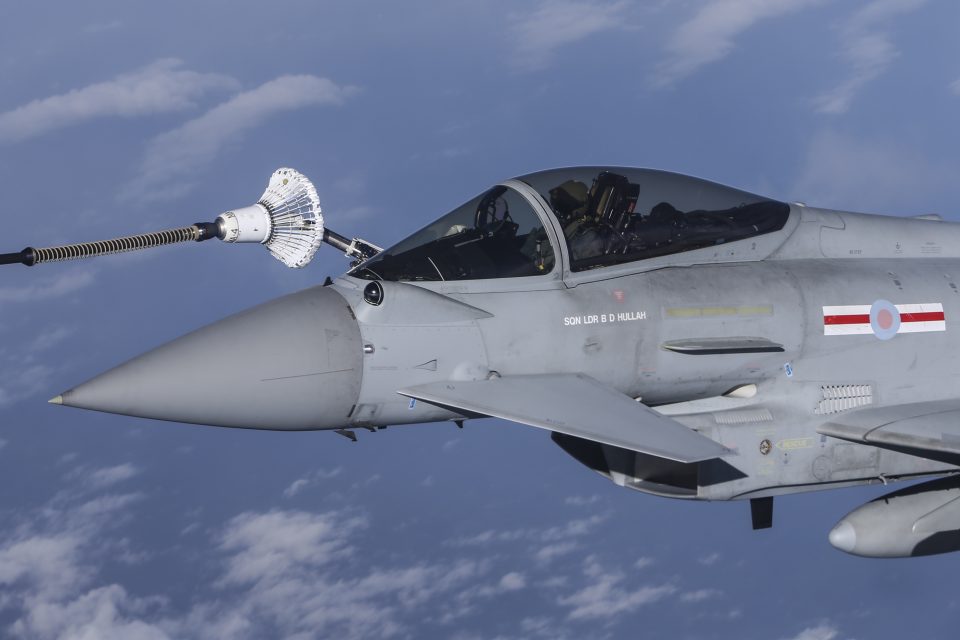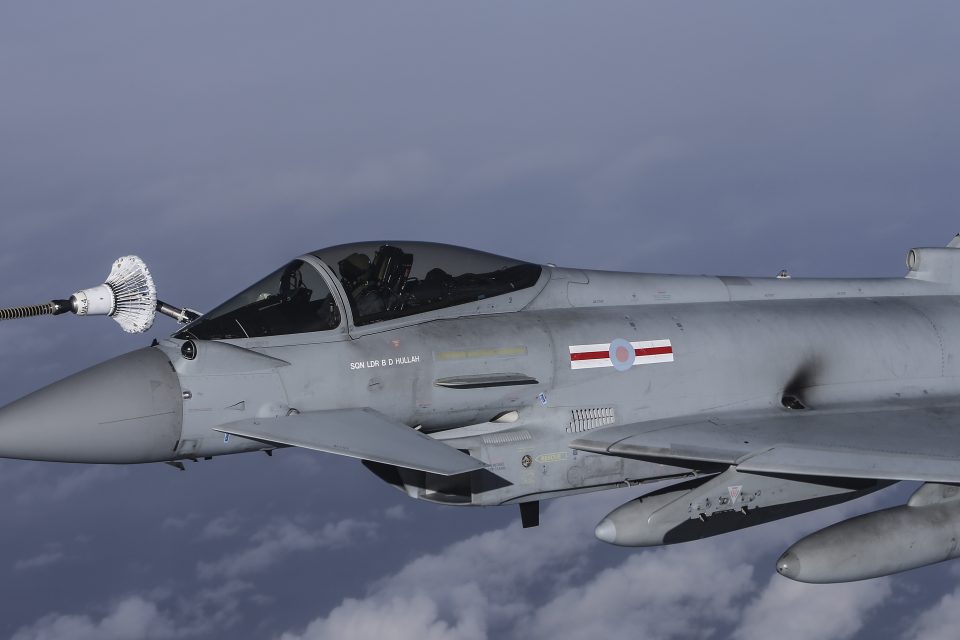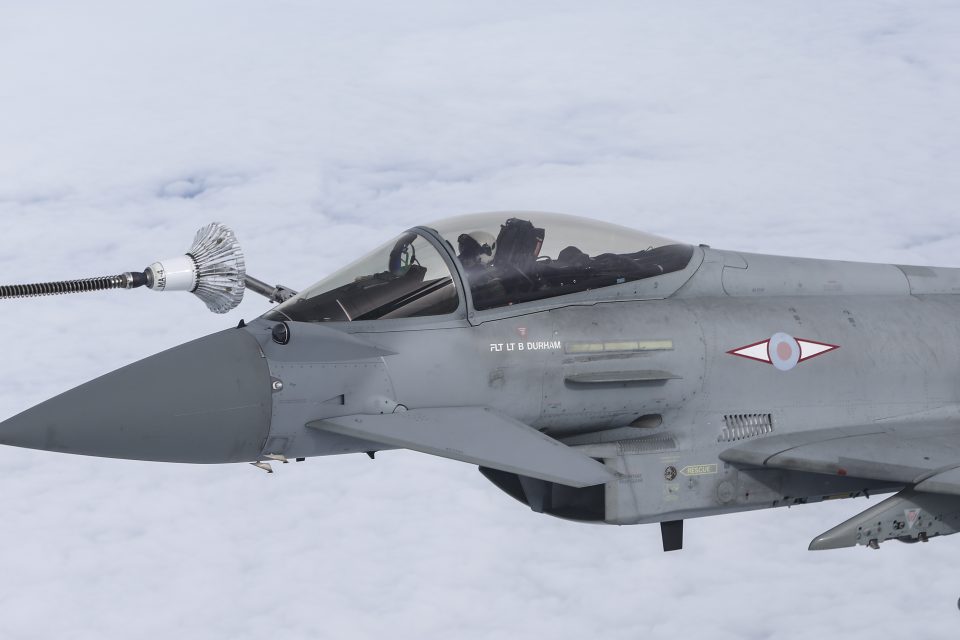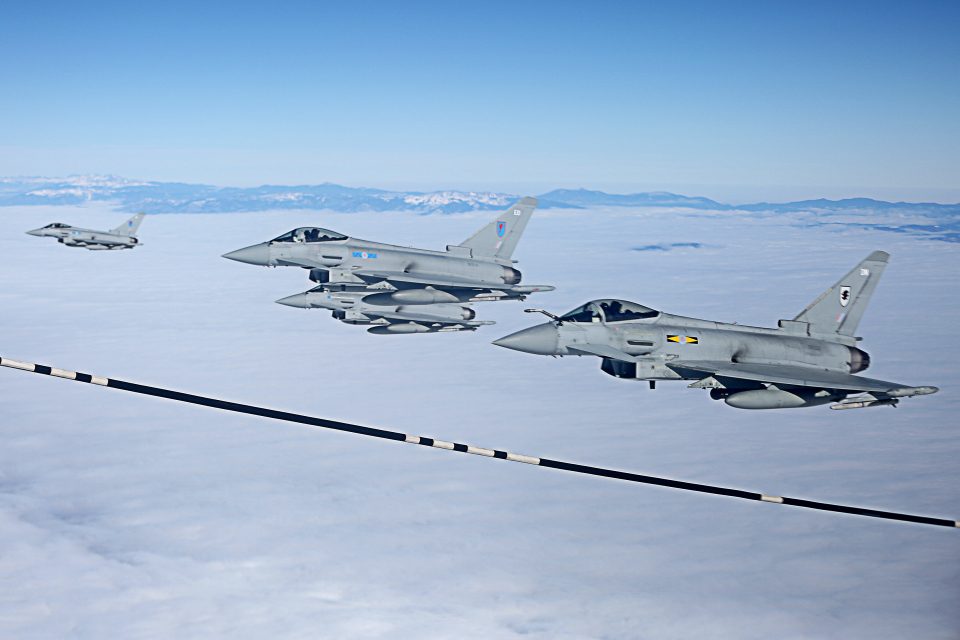2017-06-30 By Robbin Laird
During my March 2017 visit to RAF Lossiemouth, I had a chance to talk with two Typhoon squadrons, namely II(AC) and 6 Squadron.
The squadrons have been busy in the past few months with various global engagements.
In the words, of the station commander at RAF Lossiemouth, Group Captain Paul Godfrey:
“In my entire time in the Royal Air Force, I’ve not seen a global deployment as we managed at the end of last year with our deployment to Malaysia, Japan and Korea.
Throughout the period we visited the United Arab Emirates, India, Malaysia, Japan, The Republic of Korea, Brunei and back through India, UAE and Greece which is about as global a deployment as you can get.”
A key aspect of being able to do this is clearly support forward.
And given that there are no Eurofighters operating by Asian air forces, engagement in the Pacific poses the challenge of organizing organic support and getting it right.
I had a chance to discuss this challenge with Squadron Leader Chris Harris from 6 Squadron.
He is in charge of the A4 element in the squadron, which is the air logistics engineering support element for the squadron.
The RAF unlike the USAF tends to bundle in a wider range of specialties into the logistics support element, including crew escape systems and support, the power support element for electrical and wiring systems, the power support elements (engine hydraulics, etc.) and the technicians who work the skin as well.
“We have just deployed to Red Flag and have the upgraded software associated with the latest variant of Typhoon, which is P1eb.
“We also operated our most advanced defensive aide systems on the aircraft as well at Red Flag.”
The deployment to Red Flag was part of the cycle of readiness for the squadron, as it gets ready to deploy on global Operations.
As Red Flag is an air-to-air exercise, this deployment fit into that aspect of the readiness training in preparation for deployment.
Question: What was the challenge of supporting 6 squadron at Red Flag?
Squadron Leader Harris: “The P1eb variant is much easier to sustain on operations than earlier Typhoons.
“It is much more reliable.
“We deployed with a single Voyager in support and carried with us our Engineering Support System (ESS), which is how we maintain the aircraft.
“These are computers with a database, which interacts with the aircraft to provide data on aircraft performance and status issues.
“The challenge of course is to design a realistic projection of the parts which we will need during deployment.
“When we are designing our logistics support to take with us we have to really think about what we are going to take with us.”
Question: How do you use the ESS system to support the aircraft?
Squadron Leader Harris: “We do not download the data from the aircraft after every flight, because the aircraft can fly a few sorties before you need to plug it into the laptop to report on its performance.
“We check the maintenance data panel on the side before flying the aircraft and that will tell you whether you have any critical faults.
“We call the no go’s.
“When we do plug the aircraft into the laptop we get a lot more detailed information.
“Based on what we learn we might do more maintenance as required.”
Squadron Leader Harris indicated that the shift from the earlier Typhoons to the latest provided a significant enhancement in terms of the maintainability of the aircraft, which obviously affects its ability to deploy away from home base as well.
He described one challenge, which involved the installation of the new defensive aid systems.
The new systems had been installed shortly before deploying to Red Flag.
Given the high performance of this system subsequently in Red Flag, this was a good addition, but placed a challenge on the table for the support element accompanying the aircraft for deployment.
“Obviously, one of the functions of the exercise as well was to test our ability to operate with a long supply chain and to enhance our ability to support expeditionary operations.
“And we now have a more experienced A4 group than before with several years of experience in supporting Typhoon on operations as well.”
For an earlier interview on the support system for Typhoon, see the following:
https://sldinfo.com/typhoon-ground-support-system-a-perspective-from-raf-lossiemouth/
According to BAE Systems:
The Engineering Support System is an electronic record system – it provides configuration assurance and is in effect a maintenance log for the Typhoon Fleet.
The system collects essential data from the aircraft, which once downloaded helps with the aircraft’s maintenance and availability programme.
http://www.baesystems.com/en/article/engineering-support-system-goes-from-strength-to-strength
The photos in the two slideshows are credited to the RAF.
This is the fourth in an eight part series based on a March 2017 visit to RAF Lossiemouth.


